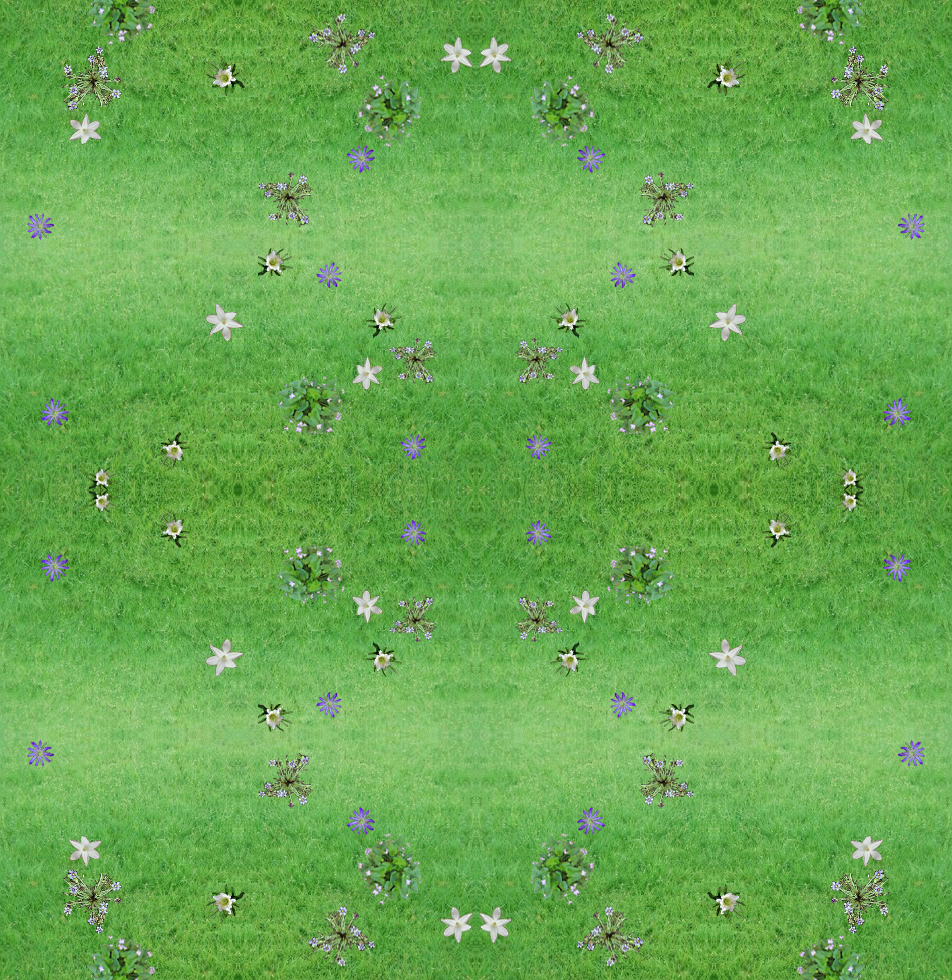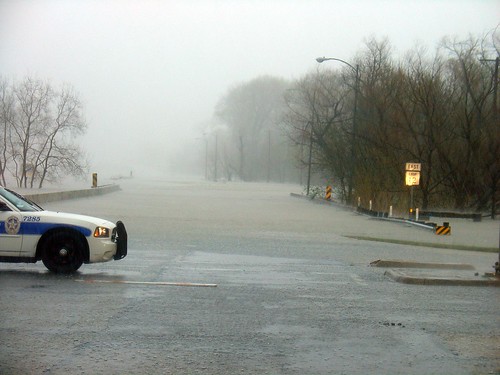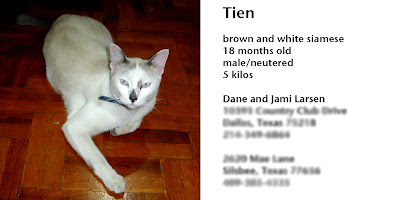
I hate lawns. After an adolescence spent cutting the family lawn during the summer in North Texas, and another six years working as a gardener, there's not much I hate worse than mowing. Ideally I'd get rid of lawns all together in favor of small gardens and restoring natural habitat. However, for a few years I've been playing around with the idea of small, jewel-like, species-rich lawns as part of a larger garden, or domestic landscape.

I love the dense, chaotic backgrounds of Gobelin and Flemish tapestries. The plants portrayed there are nearly crystalline in their detail, recognizable by species, and, though densely packed, still isolated enough to be viewed as specimens, running a fine line between natural, overlapping fecundity, and the museum case. Rather like a
Wunderkammer or
cabinet de curiosités.
In constructing a
Wunderkammer an individual culls from the profusion of forms in the natural world, selecting those that are the most curious, the most exotic, the most laden with human meaning, be it scientific or poetic (in a way it is a compounding of
Bachelard's categories of intimate space--a shell within a nest, hidden in a drawer, inside a cabinet, tucked away in a corner). It is a collection, but the terms of categorization, and criteria for entry are personal, just as the collection of plants covering the ground of the
Unicorn Tapestries are specific and sorted, yet personalized and stylized by the weaver's own hand.
My proposal then is for a new type of lawn, culled from the native (and, if you must, naturalized) species in a given location. Since I am most familiar with the flora of central Texas I will base my selection of species upon that specific set. The intent here is not to recreate native prairie or savanna (which I feel should be done anywhere there is space available, say over half an acre of empty and unused yard), but to create a small, intimate, aesthetic object upon which one may tread. Also, the goals and guidelines used to create the lawn should be adaptable to other areas, guiding the selection of an appropriate species list.
Goals and Guidelines (Patterns):1) Natives--The species selected must be native to the area, or naturalized and productive citizens, meaning no invasives. A few dandelions are okay, but no
Sonchus.
2) Low-growing, but Mowable--The species selected should be naturally low-growing, or amenable to training through mowing.
Ranunculus macranthus will shoot up twelve inches if you let it, but it doesn't mind creeping along the ground. And while you shouldn't be afraid to break out the push mower every once in a while (no rotaries, please), you shouldn't feel compelled to either.
3) Complete Coverage--The aesthetic effect desired is that of a green ground dotted with small blooming plants. In a
xeric lawn, for example, if one area is too shady for buffalo grass, substitute with cedar sedge, placing blue-eyed grass in the marginal area between the two. The idea here is to achieve complete coverage through a mosaic of species rather than uniform coverage with one species.
4) Wet and Dry Adapted--This is essentially a subset of Complete Coverage when applied to a lawn with both wet and dry areas. It also applies to lawns with uniform conditions, but which might be either too wet or too dry for a particular species. If an area is too soggy or poorly drained for buffalo grass, try a mix of
Marsilea and
Hydrocotyle.
5) Walkable--You should want to take your shoes off every time you step on this lawn. The plants should be well established and robust enough for daily traffic with shoes on (don't go moving things around in mid summer), yet soft, dense, and finely textured so as to make barefooting preferable.
6) Small--Though this plan could be applied to a rather large area, a whole yard even, it is actually intended to be the floor of what should be thought of as an outdoor room. Plan your space with that in mind, somewhere between 100 and 400 square feet. As for the rest of your yard, why not grow something you can eat, or give some of it back to nature?
 Species list for a Central Texas Lawn:Allium drummondii, Alophia drummondii, Anemone berlandieri, Buchloe dactyloides, Carex planostachys, Commelina erecta, Cooperia drummondii, C. pedunculata, C. smallii, Herbertia lahue, Hydrocotyle bonariensis, H. umbellata, Hypoxis hirsuta, Manfreda maculosa, Marsilea macropoda, M. vestita, Nemastylis geminiflora, Nothoscordum bivalve, Oxalis drummondii, Phyla incisa, Ranunculus macranthus, Schoenocaulon texanum, Sisyrinchium chilense, Tetraneuris linearifolia, T. scaposa, Tinantia anomala, Tradescantia subacaulis, Viola missouriensis
Species list for a Central Texas Lawn:Allium drummondii, Alophia drummondii, Anemone berlandieri, Buchloe dactyloides, Carex planostachys, Commelina erecta, Cooperia drummondii, C. pedunculata, C. smallii, Herbertia lahue, Hydrocotyle bonariensis, H. umbellata, Hypoxis hirsuta, Manfreda maculosa, Marsilea macropoda, M. vestita, Nemastylis geminiflora, Nothoscordum bivalve, Oxalis drummondii, Phyla incisa, Ranunculus macranthus, Schoenocaulon texanum, Sisyrinchium chilense, Tetraneuris linearifolia, T. scaposa, Tinantia anomala, Tradescantia subacaulis, Viola missouriensis.
This list can easily be added to as long as the goals and guidelines above are followed. There are plenty of rugged, low-growing plants with finely textured foliage and attractive blooms, but they may have spines, barbs, woody growth, or spiny fruits and seeds, making them inappropriate. Species for the lawn fall into two basic categories, with some overlap between the two: backdrop and blooms.
Buchloe dactyloides,
Carex planostachys,
Hydrocotyle sp., and
Marsilea sp. are all obvious backdrop plants, chosen to provide a green ground for the others to bloom on.
Alophia drummondii,
Cooperia sp., and
Herbertia lahue are intended to be little blooming gems, while
Commelina erecta,
Sisyrinchium sp.,
Tinantia anomala, and
Viola missouriensis do double duty as backdrop and blooms, as well as providing some green through the winter.
If you plan on embarking on this project, or something similar, please contact me through this blog. I would love to see how it turns out.
![]()
![]()
![]()

![]()

![]()

![]()

 I love the dense, chaotic backgrounds of Gobelin and Flemish tapestries. The plants portrayed there are nearly crystalline in their detail, recognizable by species, and, though densely packed, still isolated enough to be viewed as specimens, running a fine line between natural, overlapping fecundity, and the museum case. Rather like a Wunderkammer or cabinet de curiosités.
I love the dense, chaotic backgrounds of Gobelin and Flemish tapestries. The plants portrayed there are nearly crystalline in their detail, recognizable by species, and, though densely packed, still isolated enough to be viewed as specimens, running a fine line between natural, overlapping fecundity, and the museum case. Rather like a Wunderkammer or cabinet de curiosités. In constructing a Wunderkammer an individual culls from the profusion of forms in the natural world, selecting those that are the most curious, the most exotic, the most laden with human meaning, be it scientific or poetic (in a way it is a compounding of Bachelard's categories of intimate space--a shell within a nest, hidden in a drawer, inside a cabinet, tucked away in a corner). It is a collection, but the terms of categorization, and criteria for entry are personal, just as the collection of plants covering the ground of the Unicorn Tapestries are specific and sorted, yet personalized and stylized by the weaver's own hand.
In constructing a Wunderkammer an individual culls from the profusion of forms in the natural world, selecting those that are the most curious, the most exotic, the most laden with human meaning, be it scientific or poetic (in a way it is a compounding of Bachelard's categories of intimate space--a shell within a nest, hidden in a drawer, inside a cabinet, tucked away in a corner). It is a collection, but the terms of categorization, and criteria for entry are personal, just as the collection of plants covering the ground of the Unicorn Tapestries are specific and sorted, yet personalized and stylized by the weaver's own hand.
